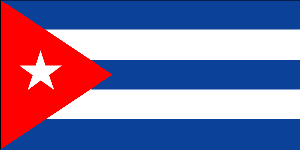
|
Cuba 
Return to Visiting Locations |
|
Background:
Fidel Castro led a rebel army to victory in 1959; his iron rule has held the
country together since. Cuba's Communist revolution, with Soviet support, was
exported throughout Latin America and Africa during the 1960s, 70s, and 80s.
The country is now slowly recovering from a severe economic recession in 1990,
following the withdrawal of former Soviet subsidies, worth $4 billion to $6
billion annually. Havana portrays its difficulties as the result of the US
embargo in place since 1961.
Climate and Terrain:
Climate: Tropical; moderated by trade winds; dry season (November to April);
rainy season (May to October.)
Terrain: Mostly flat to rolling plains, with rugged hills and mountains in the
southeast.
Elevation extremes: Lowest point: Caribbean Sea 0 m, highest point: Pico
Turquino 2,005 m.
Natural resources: Cobalt, nickel, iron ore, copper, manganese, salt, timber,
silica, petroleum, arable land.
|
|
|
Economy overview:
The government continues to balance the need for economic loosening against a
concern for firm political control. It has undertaken limited reforms in recent
years to stem excess liquidity, increase enterprise efficiency, and alleviate
serious shortages of food, consumer goods, and services, but is unlikely to
implement extensive changes.
|
|